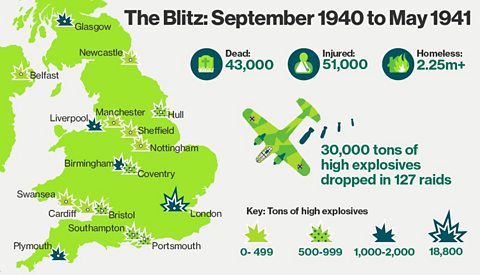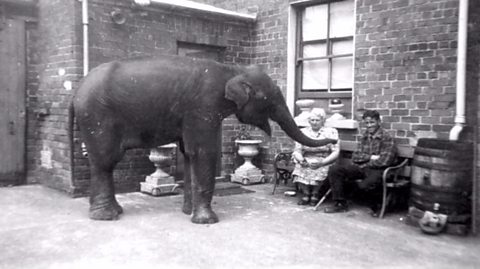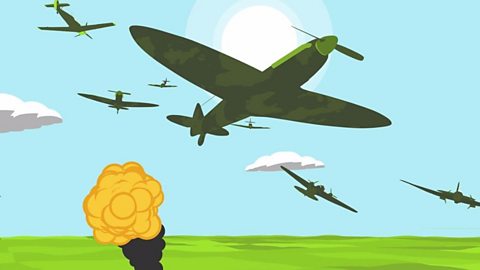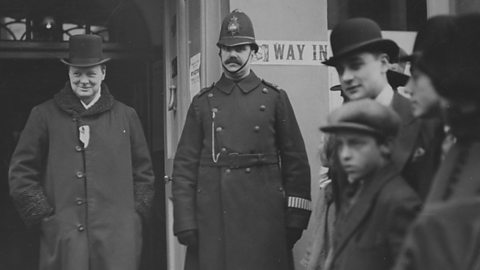Britain becomes a battleground
With World War Two entering its second year, Hitler stepped up his campaign against Britain. Civilians had already experienced rationing, blackouts, and grinding volunteer work. Now events were to take a terrifying turn as ordinary men and women found their lives at risk.
On 7 September 1940, the German air force launched a eight-month campaign that would rain explosives on 16 major British cities and many smaller towns. ΒιΆΉΤΌΕΔs were obliterated and historic centres destroyed. Daily life was now on the front line of battle where many people had to decide whether to leave or take their chances against the bombs.
The Blitz in numbers
Even before the Blitz began, the British had a good idea of where bombs were likely to fall.
Industrial cities and ports were the Luftwaffe's main targets. Many civilians were offered the chance to relocate to safer parts of the country. In some cities, 60% of children and other 'priority' civilians fled their homes at the beginning of the war. However, many of these returned home to take their chances as the conflict dragged on.

CLICKABLE: Where would you seek shelter?
The rising and falling wail of an air raid siren sounded when enemy aircraft were sighted in the area. It went on for two minutes. Civilians had to decide quickly where to go.
Sirens came to dominate people's lives and could go off several times both day and night in cities like London and Liverpool. After the danger passed a continuous siren noise indicated the 'All Clear'. Air Raid Precaution (ARP) wardens would then help find and reunite families that had been separated by the bombing. Civilians would emerge to see what had been destroyed.
Click or tap below to find out about the different kinds of shelter
Civilians on the front line
The government was concerned that the bombing campaign would cause a collapse in morale. In response the Ministry of Information created propaganda films to bolster public opinion, such as this one featuring Mrs Barker from Londonβ¦
However, while official reports described moments of public hysteria and panic during early raids they didn't lead to widespread defeatism as they had feared. Instead resilience increased as civilians adapted to the difficult and exhausting conditions. Public attitude surveys revealed many also took on a fatalistic attitude to cope with the continuous pressure of war.
The Spirit of the People, 1940, British PathΓ©.
Civilians on the front line
Announcer:
Mrs. Barkerβs home has been bombed by the Huns, but itβll take more thanthat to move her.
Interviewer:
Good afternoon Mrs. Barker. Howβs the roof? Is the rain coming through?
Mrs Barker:
It came through the other day.
Interviewer:
Itβs alright now?
Mrs Barker:
Itβs alright now.
Interviewer:
Well Mrs. Barker, you can be evacuated if you like.
Mrs Barker:
I donβt wish to be,
Interviewer:
Why? Because youβve got to look after your family?
Mrs Barker:
Yes
Interviewer:
How many have you got in your family?
Mrs Barker:
Thereβs my husband and daughter. And also our son serving in the army and another waiting to be called up for the navy. Yes, even as Hitler and GΓΆring, murderers as they are, come night after night and bomb us, Iβm determined to stop in my house. Iβve been here 27 years and still Iβm determined to defy them and stop here. As long as weβve got a roof over our heads.
Announcer:
Thatβs the spirit of the people!
Learn more about this topic:
WW2: How did an elephant beat the Belfast Blitz? document
Elephant in the garden: How extreme measures were taken to keep people, properties and animals safe during the Belfast Blitz.

WW2: What was the secret to winning the Battle of Britain? document
The Battle of Britain was a pivotal moment in World War Two, when the country stood alone against Hitler's seemingly unstoppable military power. This guide explores this historic period through text and infographics.

Sir Winston Churchill: The greatest Briton? document
From schoolboy failure to wartime hero, Winston Churchill's astonishing life has made him a British icon. Discover how he came to be the man we remember.
